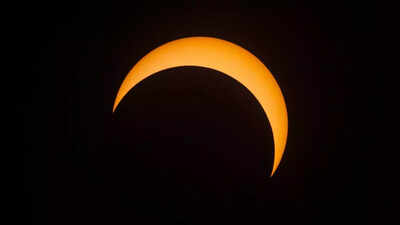ARTICLE AD BOX

As 2025 moves into its last few months, there’s one final sky event that’s catching people’s attention– a solar eclipse. This will be the second and last one of the year, and many people around the world are already looking forward to it.Whether you’re someone who enjoys watching the skies or someone who follows traditions linked to such events, this eclipse is worth knowing about. While it won’t be visible everywhere, it still has many people curious.
Here are five key details to know about the last solar eclipse of 2025:
1. The eclipse begins late on September 21 and ends early on September 22
The eclipse will begin late at night on September 21, around 11:00 PM (IST), and continue until about 3:24 AM on September 22. Since it will happen during the night in India, it won’t be visible from here.
This will be a partial solar eclipse, which means the Moon will only block part of the Sun. So, while it won’t be a full eclipse, people in certain parts of the world where it’s visible will still get to see an interesting sight.

2. Visibility will be limited to parts of the Southern Hemisphere
This solar eclipse won’t be visible everywhere. As per NASA, it can only be seen from some places like eastern Australia, New Zealand, Antarctica, and parts of the South Pacific Ocean. A few areas along the edge of the South Atlantic Ocean might also catch a glimpse.
However, people in India, Europe, Africa, and the Americas won’t be able to see it because of time zone differences and the Sun’s position at that time. Websites like TimeandDate and EarthSky, which track eclipses around the world, have also shared the same visibility details.
3. No Sutak period in India due to lack of visibility
In Indian customs, the Sutak period is considered an inauspicious time linked to eclipses, during which people usually avoid religious and household activities.
But this practice is only followed when the eclipse is actually visible from a particular location. Since the September 21 solar eclipse won’t be seen from India, the Sutak period will not be observed in the country.

4. The eclipse comes just weeks after a lunar eclipse
September is expected to bring two significant celestial events. In addition to the solar eclipse on September 21–22, the second lunar eclipse of 2025 is also predicted to occur earlier in the month, on September 7.
Both these occurrences are already drawing interest from astronomy groups and tracking platforms around the world.5. A quick refresher: What is a partial solar eclipse?

A solar eclipse happens when the Moon moves in front of the Sun and blocks its light for a little while. During a partial solar eclipse, the Moon covers only part of the Sun. How much of the Sun is covered depends on where you are. It may not be as dramatic as a total eclipse, but it’s still a rare and interesting sight for people living in places where it’s visible.Images: Canva (only for representative purposes)



.png)
.png)
.png)
















 16 hours ago
6
16 hours ago
6









 English (US) ·
English (US) ·